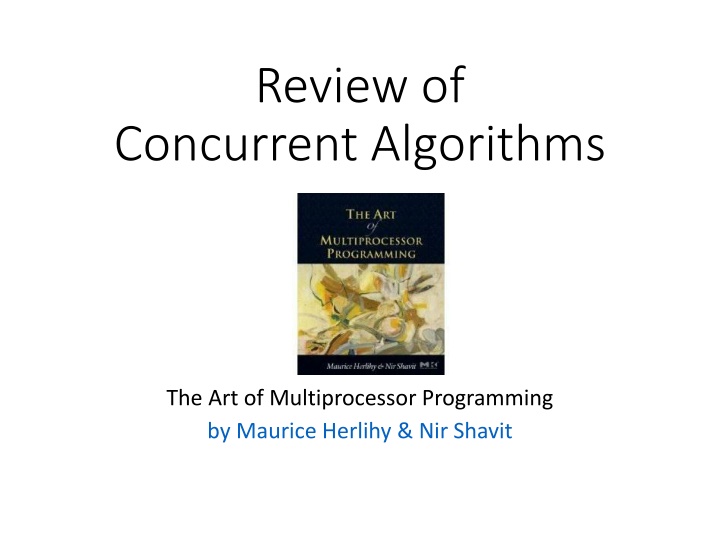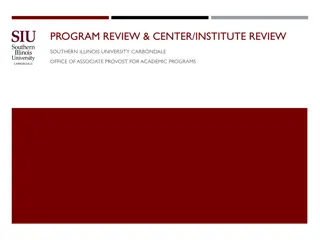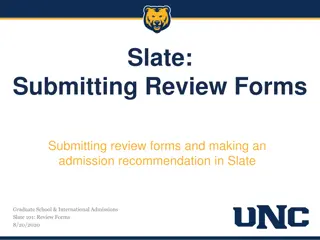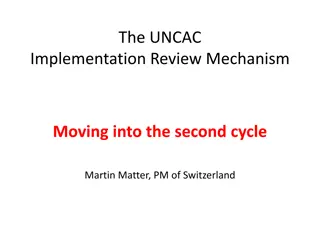
Concurrent Algorithms: A Review of Multiprocessor Programming Concepts
Delve into the world of concurrent algorithms with this comprehensive review of Maurice Herlihy and Nir Shavit's "Concurrent Algorithms: The Art of Multiprocessor Programming". Explore topics like concurrent computation, memory object management, and correctness in concurrent objects, along with a quick quiz to test your understanding. Understand the intricacies of linearizability and execution models, all illustrated with informative images.
Download Presentation

Please find below an Image/Link to download the presentation.
The content on the website is provided AS IS for your information and personal use only. It may not be sold, licensed, or shared on other websites without obtaining consent from the author. If you encounter any issues during the download, it is possible that the publisher has removed the file from their server.
You are allowed to download the files provided on this website for personal or commercial use, subject to the condition that they are used lawfully. All files are the property of their respective owners.
The content on the website is provided AS IS for your information and personal use only. It may not be sold, licensed, or shared on other websites without obtaining consent from the author.
E N D
Presentation Transcript
Review of Concurrent Algorithms The Art of Multiprocessor Programming by Maurice Herlihy & Nir Shavit
What we have learned Model for concurrent computation Correctness for concurrent objects Algorithms
Concurrent Computation memory object object
Bus-Based Architectures cache cache cache Bus memory
Interleaving Semantics T1 T2 || = Program Possible executions
Quick quiz #include <thread> #include <assert.h> C++ Program int x = 0; void foo() { while (true) { x = 1; x = 0; assert(x == 0); } } Will the assertion fail? int main() { std::thread t(foo); std::thread t2(foo); t.join(); t2.join(); }
Objects + Clients T1 T2 T3 A concurrent program = concurrent objects + their clients push() { } s.push(7); x = s.pop(); s.push(6); void push(int v) { } int pop() { } Client code Concurrent object 7
What we have learned Model for concurrent computation Correctness for concurrent objects Algorithms
Correctness Linearizability, linearization points
Linearizability History H is linearizable if it can be extended to G by Appending zero or more responses to pending invocations Discarding other pending invocations So that G is equivalent to Legal sequential history S where G S
Example q.enq(x) q.deq(y) q.enq(y) time
Talking About Executions Why? Can t we specify the linearization point of each operation without describing an execution? Not Always In some cases, linearization point depends on the execution
Correctness & Progress Linearizability, linearization points Progress: Lock-freedom, Wait-Freedom, Deadlock- freedom, Starvation-Freedom
Progress Conditions Blocking Non-Blocking Everyone makes progress Wait-free Starvation-free Someone makes progress Lock-free Deadlock-free
Correctness & Progress Linearizability Progress: Lock-freedom, Wait-Freedom, Deadlock- freedom, Starvation-Freedom For locks: Mutual Exclusion, Deadlock-freedom, Starvation-Freedom, First-Come-First-Served
Mutual Exclusion Let CSik be thread i s k-th critical section execution And CSjm be j s m-th execution Then either or CSik CSjm CSjm CSik
Deadlock-Free If some thread calls lock() And never returns Then other threads must complete lock() and unlock() calls infinitely often System as a whole makes progress Even if individuals starve
Starvation-Free If some thread calls lock() It will eventually return Individual threads make progress
First-Come-First-Served Divide lock() method into 2 parts: Doorway interval: Written DA always finishes in finite steps Waiting interval: Written WA may take unbounded steps Art of Multiprocessor Programming 19
First-Come-First-Served For threads A and B: If DAk A s k-th doorway precedes B s j-th doorway Then CSAk A s k-th critical section precedes B s j-th critical section B cannot overtake A DB j CSBj Art of Multiprocessor Programming 20
What we have learned Model for concurrent computation Correctness for concurrent objects Algorithms
Algorithms Locks List-Based Sets Queues and Stacks
Locks Peterson Lock (for two threads) Filter Lock Lamport s Bakery Lock Test-And-Set Lock Test-Test-And-Set Lock Exponential Backoff Lock Anderson s Array-Based Queue Lock CLH Queue Lock MCS Queue Lock
List-Based Sets Lock-Coupling List Optimistic List Lazy List Lock-Free List
Queues and Stacks Queues Two-Lock Queue Lock-Free Queue Stacks Treiber s Lock-Free Stack (Exponential Backoff) Elimination Backoff Stack






















